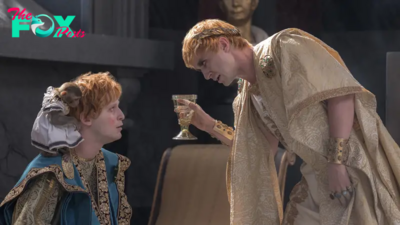Entertainment
The Breathtaking Penelope Is Like Nothing Else on TV
Penelope is an ancient name, dating back almost three millennia to the Odyssey. Homer’s Penelope, the queen of Ithaca, is Western culture’s archetypal faithful wife, fending off suitors by the dozens as she waits at home for her husband to return from the decade-long Trojan War. But in the breathtaking half-hour drama Penelope, now streaming on Netflix, it is her contemporary teenage namesake who goes on an odyssey, running away from home and trekking through the Pacific Northwest wilderness on a quest that is as Mysterious to her as it is to the viewer.
Created and written by indie film and TV eminence Mark Duplass and Biosphere director Mel Eslyn, who also directed and served as showrunner, Penelope is like nothing else on television. Each of its eight episodes is immersive and impressionistic; the camera lingers on the vibrant greens and deep browns of the natural world, in patient shots soundtracked by birdsong, the crunching of leaves underfoot, and serene, wordless music. Against that backdrop, Megan Stott (Little Fires Everywhere) gives a remarkable performance in the title role, embodying, in all her confusion and contradictions, a character who is at once a regular 16-year-old, a girl in the throes of an existential crisis, and the heroine of an ambitious allegory.
When we meet Penelope, she is caught up in a moment of everyday transcendence, dancing in the neon-lit woods with other young people on some sort of camping trip. Everyone is listening to music on their own headphones; she’s surrounded by peers but also conspicuously alone. The next morning, her mother texts that she needs to come home for SAT prep. Penelope types out a reply—“Mom… was I a happy kid?”—but thinks better of it. Then she goes to a big-box store, buys several hundred dollars’ worth of outdoor gear, hops a train, and records a farewell voice message imploring her parents not to look for her. “It’s not you,” she says. “I’m not running away. I feel like I’m running towards something. It’s like I’m being called.”
Her destination is Cascade National Forest, and by the time she gets there, she’s so broke that she has to sneak in after the ranger at the gate leaves for the night. Though she has picked up a survival guide, Penelope clearly does not have the skills for a solo expedition of any length. The first night, she sleeps under a majestic, moss-carPeted tree and asks for its help as she finds her way. Little by little, through great effort, over the course of several episodes, she teaches herself to start a fire, find food, build shelters of ever-increasing sophistication. She is, from a psychological perspective, experiencing something extremely unusual. Yet she’s also recognizable as a teen, celebrating her backwoods achievements by dancing and squealing.

Penelope encounters others in the forest, Animals as well as people. A lone bear cub becomes a mirror of sorts: “What happened to you, anyway?” she asks it. “Did your mom die? Did you get lost or run away? If you did, do you feel like a real asshole?” The people she meets have also strayed from paths they were expected to walk. Krisha Fairchild, the ivory-haired bohemian who broke out in Trey Edward Shults’ Krisha, is perfectly cast as a soulful activist who has been camping out for decades to stop loggers from cutting down her beloved trees. When Penelope confides she’s afraid “there’s this massive hole” inside her that she’ll “never be able to fill,” the woman explains the concept of inherited trauma: “The pain that you felt—it might be really, really old. So you’re not gonna understand it.” But, she says, it’s “the pain that connects us.”
Television at its best is often described as novelistic, defined by psychologically rich characters and intricate, interconnected storylines. More like poetry than prose, Penelope does something we almost never see on TV, no matter how much of it Hollywood churns out. The situation resonates in ways that go far beyond what is literally happening on screen. By adhering to Penelope’s point of view, the show not only spares us the familiar plot beats of frantic parents and police investigations, but also fixes our gaze on the painstaking daily work she must do to survive. I was moved, too, by the extent to which it treats her—in a medium that often reduces teenage girls to victims or monsters or jokes—like a whole, if still developing, person whose journey deserves to be taken seriously. Duplass and Eslyn are wise to avoid overanalyzing her motivations; the mystery keeps her quest universal. What would make a person drop out of society ca. 2024 to seek spiritual fulfillment in nature? I mean, have you seen society ca. 2024?
Duplass and Eslyn acknowledge, at one point, how the series echoes Into the Wild. There are also palpable connections to stories—rare but more numerous each year—of young women who leave civilization and take their chances in the wilderness, from Cheryl Strayed’s Wild to Lauren Groff’s The Vaster Wilds. But those predecessors have more definitive, triumphant or tragic, resolutions. Penelope’s abrupt ending might be its weakest point. But the series is true to its subject in that it’s less about the destination than about the adventure, its challenges and its revelatory moments and the texture of a life pared back to basics. If you’ve ever found yourself yearning for a reality more elemental than your own, here is a show that will speak to your soul.
-
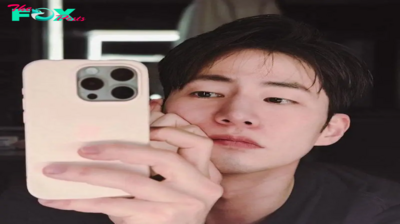
 Entertainment40m ago
Entertainment40m agoRemembering Song Jae-rim: A Look at His Best Movies and K-Drama Performances
-
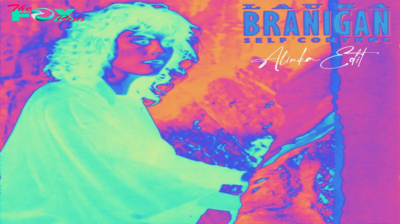
 Entertainment10h ago
Entertainment10h agoAmerica On CoffeeWe’re simply inviting you to take a timeout into the rhythmic ambiance of our breakfast, brunch and/or espresso alternatives. We’re pleased everytime you cease by.SELF CONTROL
-

 Entertainment12h ago
Entertainment12h agoOrange County Choppers Is Ready For Its Big Comeback
-

 Entertainment18h ago
Entertainment18h agoSki Area Officially Opens the Ski Season For New York
-

 Entertainment22h ago
Entertainment22h agoGladiator II Belongs to Denzel
-
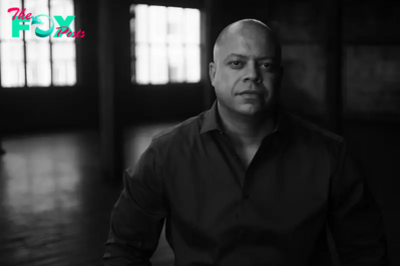
 Entertainment22h ago
Entertainment22h agoJJ Velazquez on Finding Freedom, From Sing Sing to Sing Sing
-
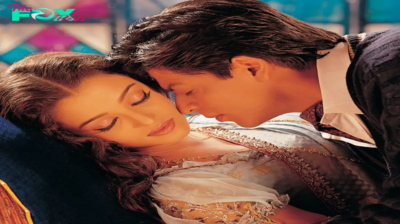
 Entertainment1d ago
Entertainment1d ago13 Most Romantic Movies Based on Novels
-
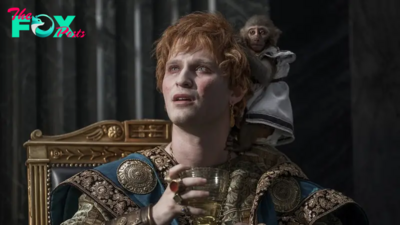
 Entertainment1d ago
Entertainment1d agoThe Monkey Is the Secret Hero of Gladiator II


